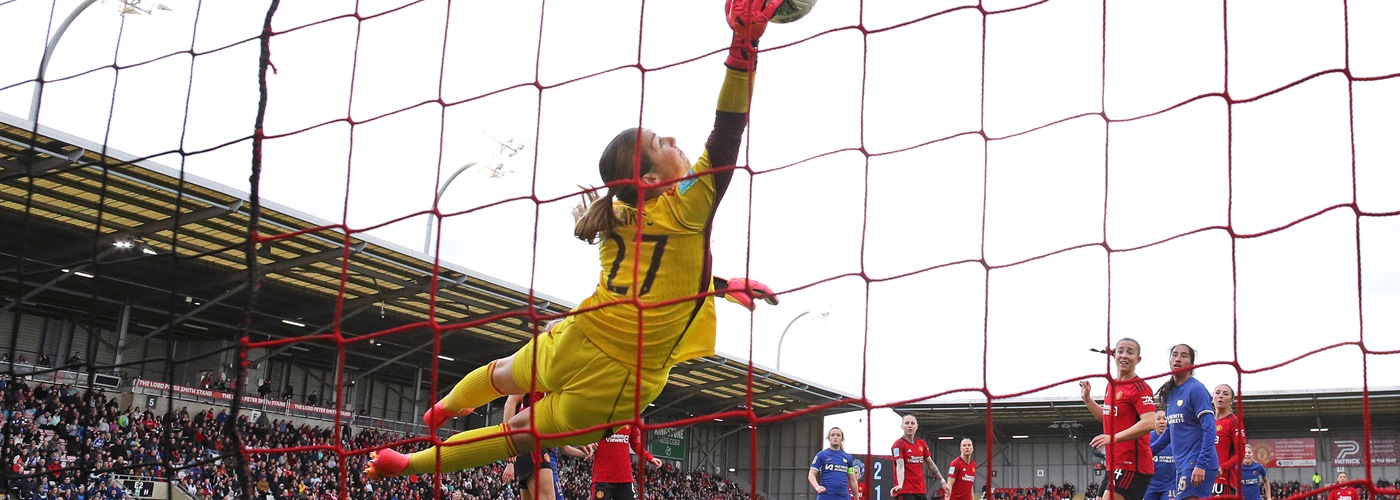In this blog, Learning Experience Lead Katie Sorenson, dives into the evolving role of the goalkeeper out of possession. The importance of defending the space and defending the area is explored, along with considerations for incorporating your goalkeepers into your practices.
"A goalkeeper is integrated into the shape of the team, every moment of the game." As a former goalkeeper, Nuno Espírito Santo (current Nottingham Forest manager), knows all about the importance of their role. Nottingham Forest have taken the Premier League by storm this season, looking to assert themselves within the Champions League spots 45 years on from winning the biggest European trophy on offer. So far this season, Nottingham Forest have been efficient in goal stopping, conceding the 4th lowest number of goals (1.22 goals conceded per 90) and saving 73% of shots they faced, the 3rd most efficient team within the league. Goalkeeper Matz Sels has been instrumental between the sticks, demonstrating Nuno’s point around the vital part goalkeepers have to play in team success.
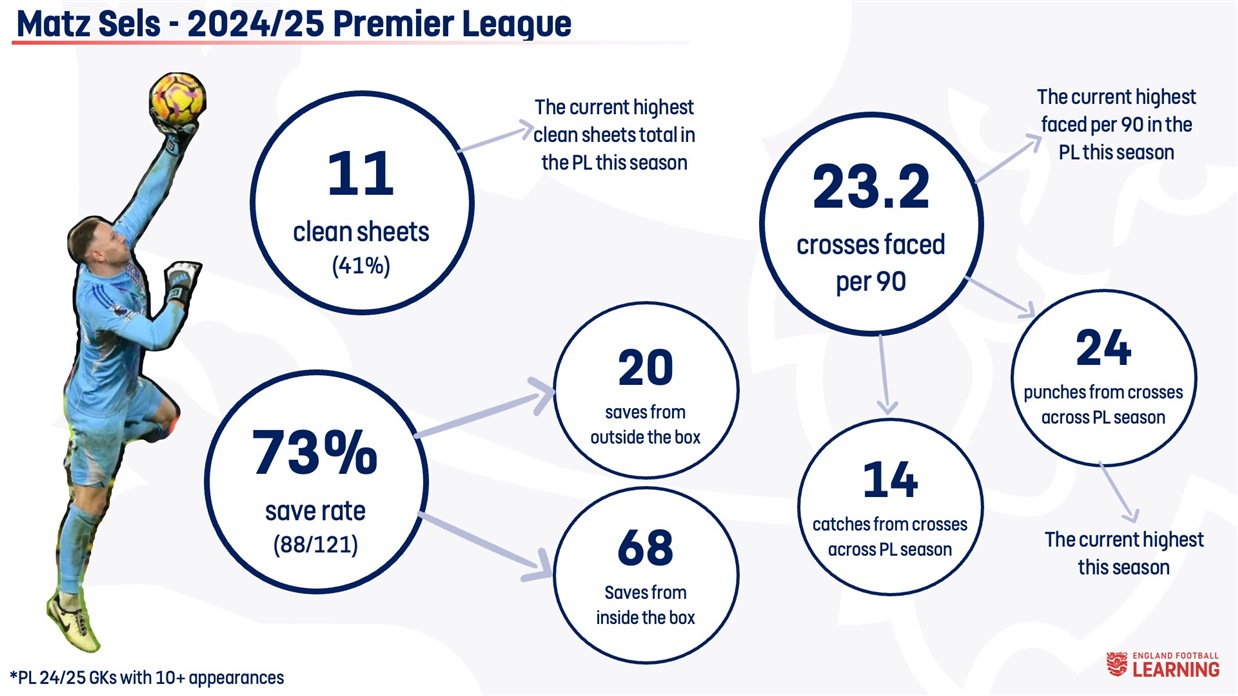
Defending the space
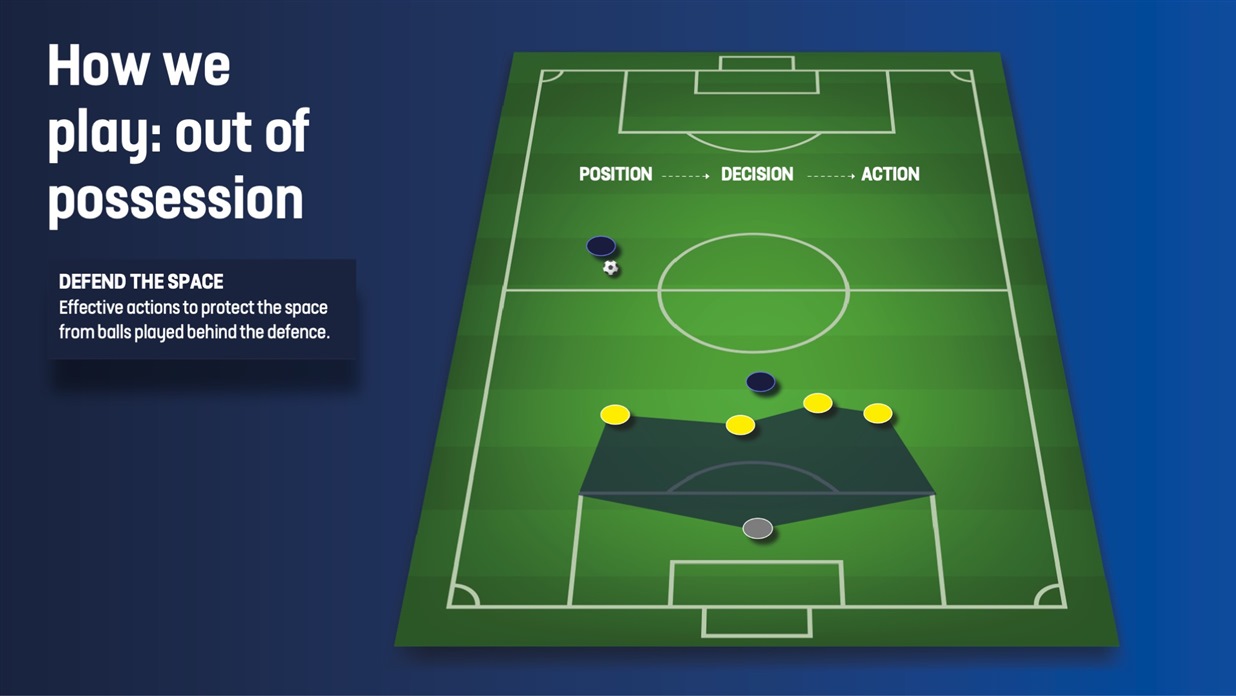
Defending the space is an effective action for goalkeepers to protect the space from balls played behind the defence. We can support our keepers with their position (based on the height and width of the phase/turnover), decision (whether to effect the through ball or re-adjust towards their goal) and action (quickest route to the ball to clear, claim or pass).
Goalkeepers often have to defend the space if their defence is playing a high line, which can leave space in behind for the goalkeeper to sweep up. This is something we see Robert Sanchez (Chelsea), Jordan Pickford (Everton), Alisson (Liverpool) and Ederson (Manchester City) execute most frequently per game within the Premier League for their position. Space behind the defensive backline can also occur on the transition to defend, again meaning the goalkeeper has to be alert to the situation to leave their box and limit the opposition team from picking up the ball near their goal.
So, what does expert ‘defending the space’ look like?
The goalkeepers timing of their movement has to be perfect, to ensure they reach the ball before any oncoming attacker. Therefore, working with your goalkeepers on the distances between their goal and their defensive line is really important. Empowering them to communicate effectively; instructing players to stop balls being played in behind the defence or being brave in coming out themselves to take control of the situation. Then comes the decision making and then technique once they have the ball at their feet or in their hands to either clear the ball from danger or start the build for their team (if they have time and space and options to do so!). It is one skill to identify and react to transitional moments in the game and another to be able to execute the actions needed to be in the best position, to cover space or close it down.
Defending the area
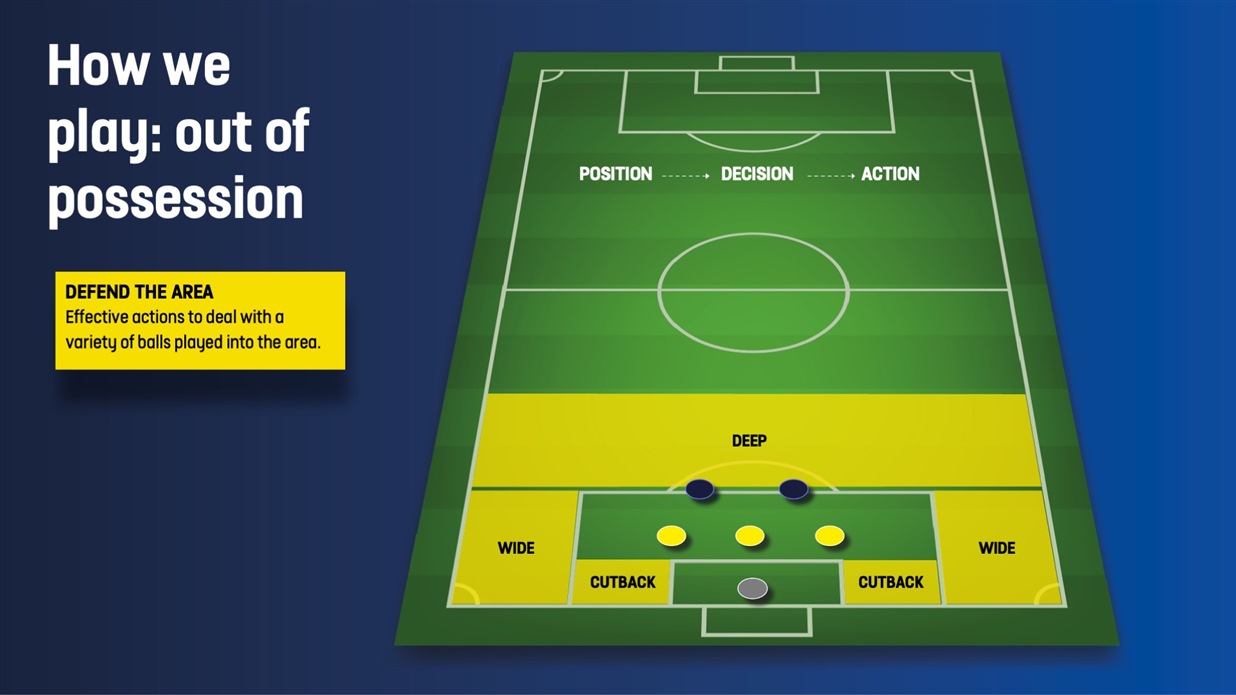
Defending the area is an effective action for goalkeepers to deal with a variety of balls played into the area. Again, we can support our keepers with their position (based on position of the cross), decision (whether to effect the cross or re-adjust to defend the goal) and action (to intercept, deflect, catch or punch).
Across the Premier League this season, teams have delivered an average of 17.5 crosses per 90. We have seen similar numbers in this season’s Women’s Super League, with teams averaging 17 crosses per 90. This highlights just how frequent crossing is within the game, and the number of occasions a goalkeeper is faced with the prospect of defending their area, to limit opposition teams from finishing from deliveries into the box.
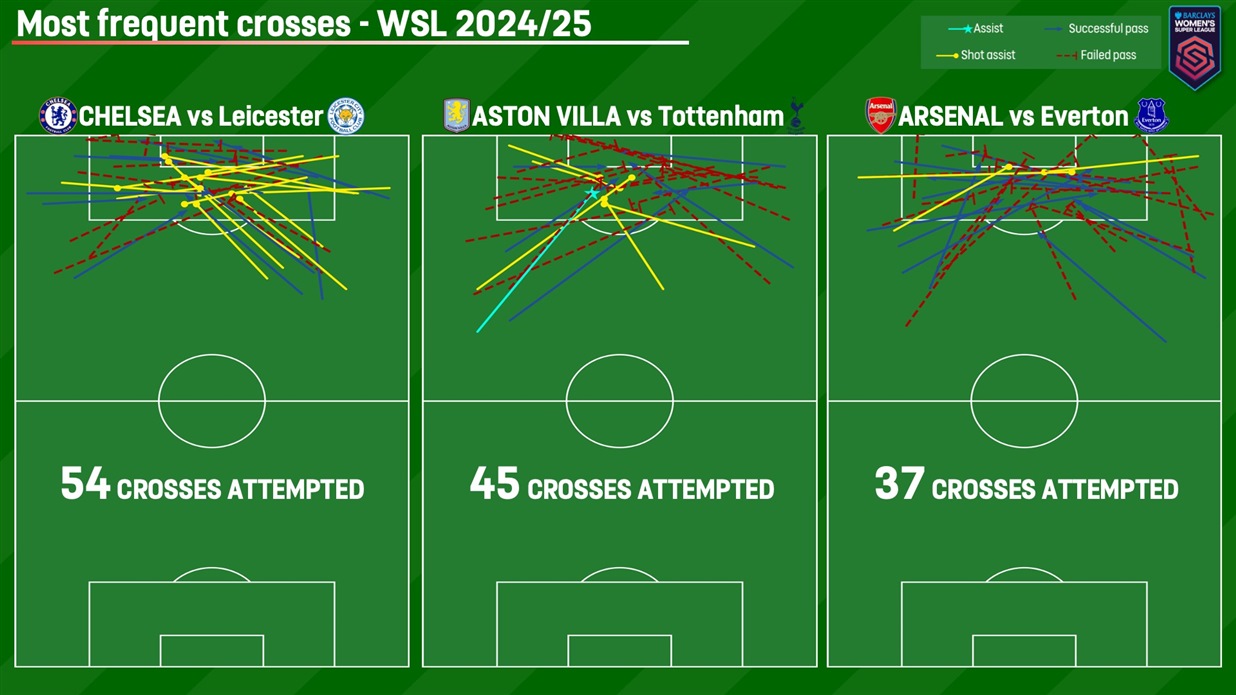
The above graphic visualises three games from the current WSL season with the highest number of crosses for one team. Goalkeepers have to be prepared to defend crosses from many different positions on the pitch and from players using different techniques. Claiming crosses will look different whether it’s a delivery from deep, from wide areas, or from cutback areas. We need to ensure we give our goalkeepers plenty of opportunity to practice defending the area within many different scenarios, to give them the best chance of defending their area confidently and successfully on matchday.
So, what does expert defending the area look like?
Incorporating the goalkeeper into practice
If we want to develop more skilful goalkeepers out of possession, then it is vital we provide them with practices that encourage them to:
- take up positions to support their teammates in and out of possession
- use different methods of receiving the ball on transitional moments (defending low through balls, defending aerial through balls, defending low crosses, defending high crosses)
- recognise whether to defend the space or stay close to goal and whether to defend the area or stay on the goal line
- defend the space and defend the area from a variety of positions and within various scenarios.
We can provide these opportunities for our players, through living and breathing the 3 R’s when we design our practices.
- Repetition - practices provide sufficient opportunities for players to solve problems and develop skills
- Realism - practices mirror tactical, physical, technical and psychological match challenges, emphasising transferability to matchday
- Relevance - tailor practices to players’ developmental stages, focusing on skill application, social engagement, psychological growth and physical readiness.
Some top tips for planning a session are to always:
- include a goal – relevant pitch geography really helps players with their positioning and decision making, and goals always add a fun competitive element!
- try to include a penalty area and/or goal area – again, this provides reference points for goalkeepers to help them identify whether to defend the space/area or to stay patient on their goal line.
- rotate players frequently and evenly to allow time to practise – if you are working with young players, can you allow those playing in goal opportunities to play outfield, to give them more opportunity to practice receiving on transition in more chaotic areas of the pitch
- provide enough space for the goalkeeper to use when supporting their teammates – designing practices that allow goalkeepers to practice with their outfield teammates enhances relationship building and teamwork, encouraging players to make the decisions at the right time within practice, ready to transfer those skills and techniques into matchday.
Enjoyed this blog? Here are a few practices you can use to bring goalkeepers into your practice:
Defend The Space | Football Session That Includes Goalkeeper From Lee Brown
Part One - Tim Dittmer: Defending The Area | FA Learning Coaching Session
Part Two - Tim Dittmer: Defending The Area | FA Learning Coaching Session
Out Of Possession Actions | Goalkeeping Coaching Session | Sam Meek | England Football Learning


